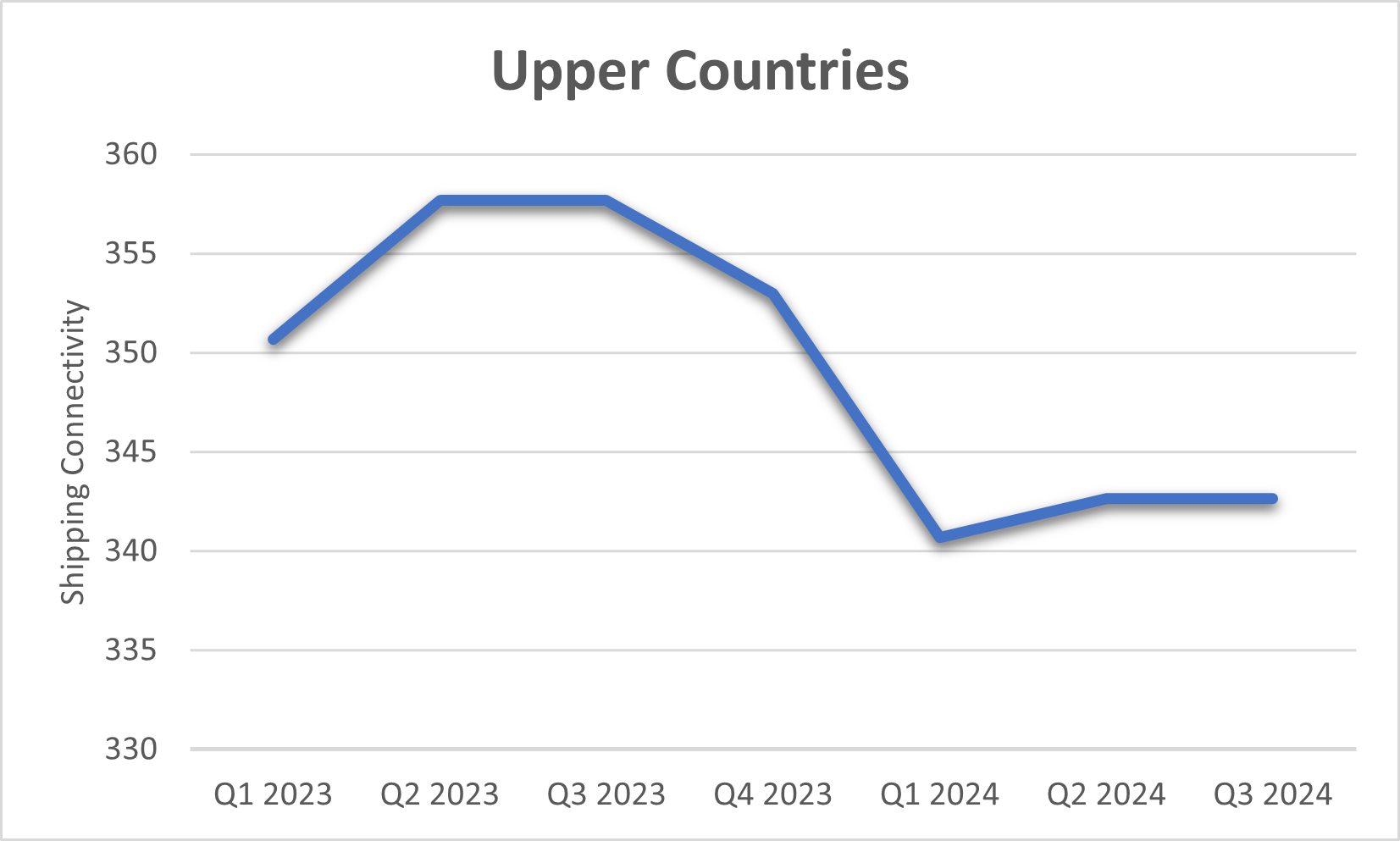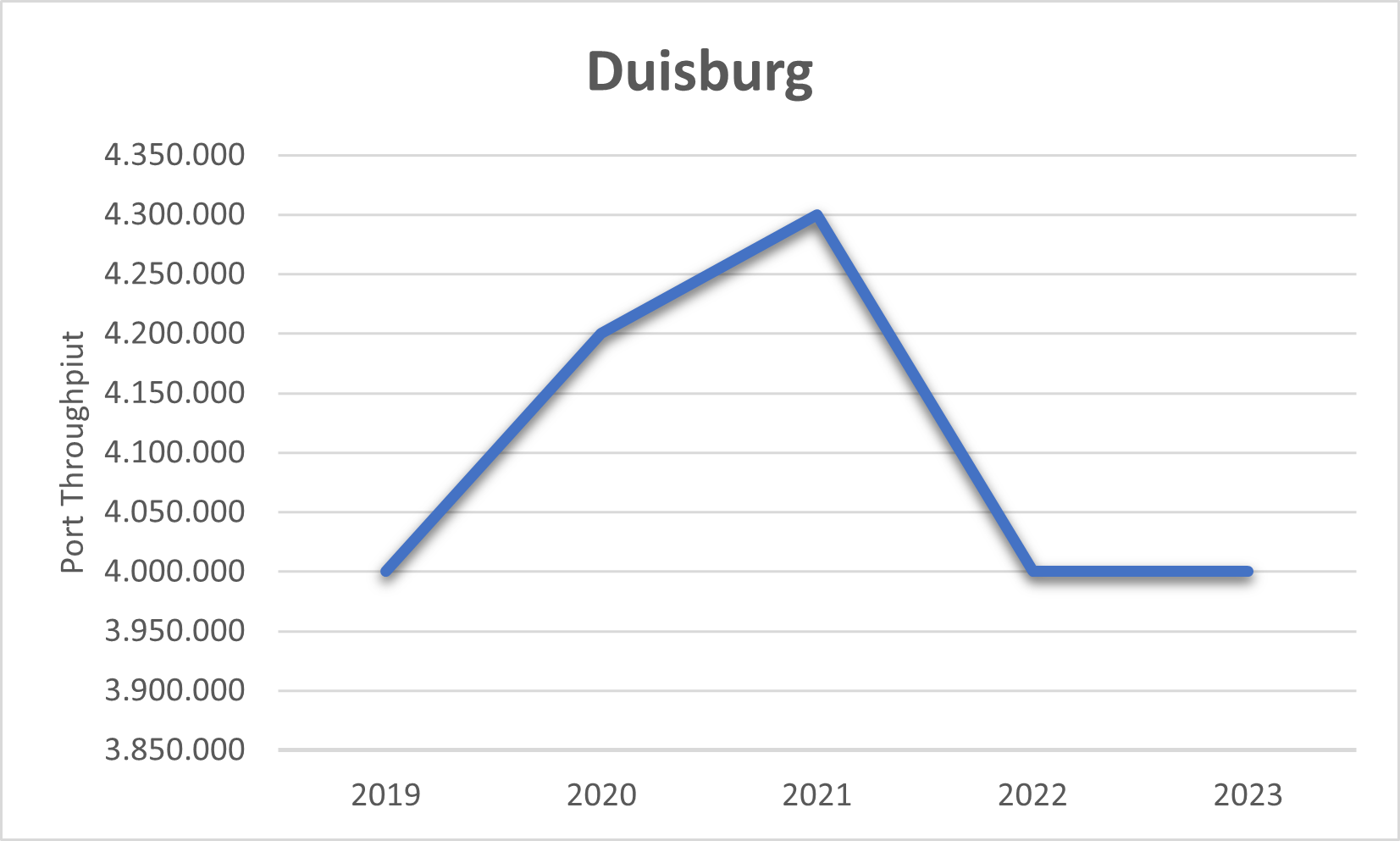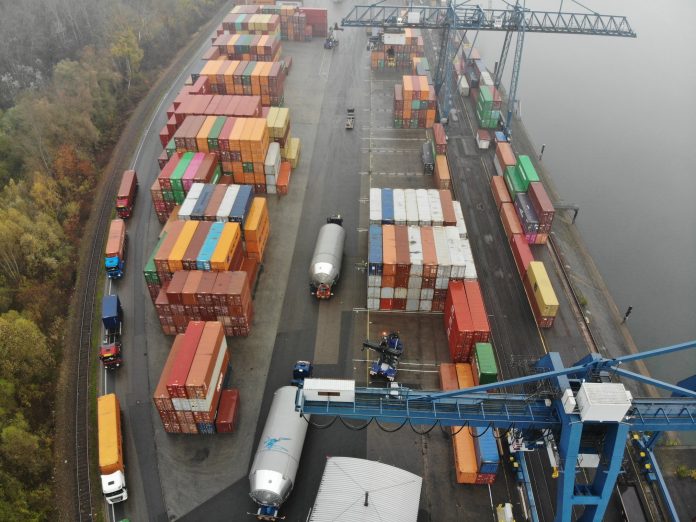As a new container terminal opened at the Duisburg port, Container News attempted to evaluate the strategic environment and the tactics of the German port.
The data process noted a notable systemic simultaneous decline in shipping connectivity across Germany, Belgium, and the Netherlands. This could be related to broader economic downturns, shifts in global trade routes, or possibly regulatory changes affecting shipping operations.

As the Duisburg port holds a network with major European ports, such as Rotterdam, Antwerp and Hamburg, the analysis took into consideration the current relations between the German port and the three giant ports.
Duisburg port’s authority and port of Antwerp signed a long-term cooperation agreement in 2022. At the heart of the agreement was the expansion of cooperation in the areas of energy transition, rail and hinterland connections, and port infrastructure. Additionally, the same year the port authorities of Duisburg and Rotterdam renewed and extended their cooperation deal. Furthermore, Duisburg recently signed a partnership with its compatriot port of Hamburg.
As the analysis revealed, Germany recorded a significant overall decrease in its shipping connectivity index, losing almost half of its 2023 dynamic. The port of Hamburg, part of Duisburg’s connection network, also recorded a decline since the start of 2024, but managed to stabilize the situation and aligned with the other major port of Europe. However, it still ranks lower than the port of Rotterdam and Antwerp.
The port of Rotterdam has recorded the sharpest decline in shipping connectivity in 2024 so far, but seems to stabilize the trend in the latest months. Antwerp port also recorded a similar trend, but managed to aligned with the port of Rotterdam and ranks slightly below.

Duisburg port saw a spike in its container volumes in 2021, but returned to 4 million TEU range in 2022.
The overall analysis revealed that Duisburg’s port performance is about to remain stable if the decreasing trend of Germany continues. However, the signing of multiple agreements and cooperations with major ports in Northern Europe could enhance the overall port performance.
The forecast attempted by this analysis shows that Duisburg’s container throughput for 2025 will be slightly over 4 million TEUs, translating to steady or slightly increased volumes compared with 2023 and 2024 figures. It is important to say, though, that the new inland terminal, which is scheduled to have 850,000 TEU capacity by 2025, could open new opportunities for the German port and boost its performance.







